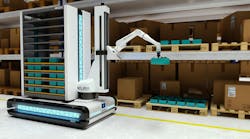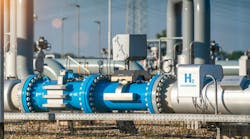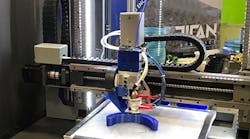The adoption of motion control technology, robotics, and power conversion are key drivers for today’s rapid growth of additive manufacturing. This non-traditional process of utilizing digital design data to create solid three-dimensional objects by fusing materials layer by layer from the bottom up (3D printing) is also contributing to the transformative results companies in diverse industries, such as aerospace, automotive, fashion, life sciences, and consumer products are realizing today.
Growing Complexity
From the industry’s early days of 3D printing prototypes to its emerging role as a full-scale producer of industrial products, the scope for additive manufacturing (AM) is quickly changing. Once limited to plastics, today’s technology can now handle substances such as ceramics, composites, metals, polymerics and hybrid materials. Overall, more than a hundred materials can be used in additive applications, paving the way for the production of more sophisticated, durable objects like machine tooling fixtures and full production molds.
Despite innovative breakthroughs and plentiful growth, however, more work needs to be done to achieve the level of speed required to make additive equipment viable for end users wanting to manufacture finished components in high volumes. But, the radical boost needed for greater speed cannot come at the expense of finish part quality. This presents the industry with a big question: where is the essential leap in quickness, while maintaining quality, for additive manufacturing to come from?
While the ultimate answer may culminate from multiple sources, the best place to look for an ideal solution is in the improvements motion control can provide.
Motion Control in Additive Manufacturing Today
When people typically think of motion control in additive technology, they visualize how quickly an extruder can move across a printing bed. While this is certainly an important part of the industrial equation, there is more to consider. For example, successfully moving a wide variety of materials with a range of physical properties through the same extruder is simply another form of motion control – and an exceptionally critical one for long term industrial productivity.
As the use of additive manufacturing grows, so does the need for tool sets and industrial standards to overcome machining issues for mainstream production. For example, demand for increased machine speed while maintaining part quality has prompted the development and improvement of industrial grade printers.
At the onset of AM, small desktop frames were commanded by hobbyist-grade controls, driving inexpensive stepper motors. This approach lacked power and reliability – two things that are greatly needed for mainstream component production.
Today, additive manufacturing utilizes high performance machine controllers, advanced servo systems and robotic technology to advance product quality and boost part production. More specifically, 3D printers that use servo control with high resolution feedback vs. stepper motors on all axes (including the extruder) allow high-speed position, velocity and torque control on all axes, which provides faster consistent flow with jam detection.
Overwhelming Benefits
From turbine components to athletic shoes, and dental crowns to new homes, companies are turning toward industrial level motion control systems for additive manufacturing to gain many benefits:
- Flexible and diversified part manufacturing capabilities
- Improved production uptime
- Increased production efficiency (i.e., reduction in raw materials used overall)
- Lower manufacturing costs
Moreover, manufacturers that combine motion control technologies with industrial robotic automation can experience the flexibility needed to create factories capable of producing unique products that fulfill complex demands.
Innovative Technology
The coordination of multiple moving parts and peripheral equipment during the additive manufacturing process is key to effective production. This is one reason why experts and engineers at Yaskawa America Inc., Drives & Motion Division, have designed innovative machine control and servo system technology:
- The MP3300iec motion controller and the Sigma-7 family of servo motors unleash the high-speed performance and precision needed to drive mainstream additive production, while executing G-code programs and smooth kinematic motion profiles.
- Productivity is essential, but flexibility must have equal importance. This need is the genesis of Singular Control, the capability built into Yaskawa’s MP3300iec controller to manage anything from six-axis robots to robotic gantries and single-servo axes from the same device, using the same programming. Singular Control allows users to program multiple machine types and motion disciplines within the additive manufacturing space, without the need to hire a specialist in robot programming.
- The next revolution comes from the servo, which is the heart of most additive manufacturing systems. Sigma-7 motors and SERVOPACK amplifiers easily pair with Yaskawa machine controllers to create motion automation systems, providing visible improvements in speed, precision and reliability. For example, one firm’s intelligent industrial 3D printers are delivering 3D printing at 350 millimeters per second , with a transfer time of one meter per second. This creates a difference you can clearly see, both in the printer’s movement and in its owner’s bottom line.
Continued Innovation
The 2017 Wohler’s Report estimates that there is currently a $7 billion market for materials equipment, and this demand is likely to grow by a 17% annual growth rate in the years to come. For this prediction to come true, there are key areas for improvement for the mainstream production of goods and products in diverse industries.
Continued research in combining MP3300iec motion control with linear motor technology will seek to address the need for increased speed and precision for 3D printing. And, more discovery into the use of MP3300iec Singular Control for robotic 3D printing will help refine secondary processes using robotic arms for applications such as surface finish, material handling, insertion and inspection.
Additive manufacturing technologies and processes provide a completely different way to design and manufacture products. With more research and development this method of production is primed to be the most valuable form of manufacturing yet, revolutionizing industries in ways that once were beyond imagination.










